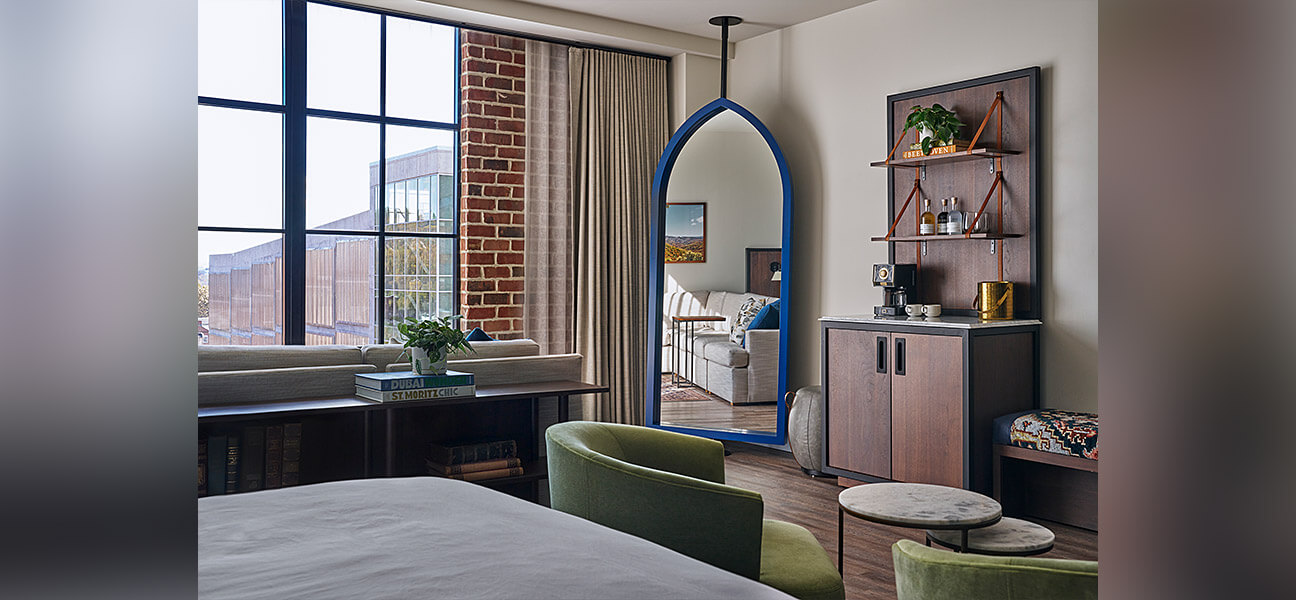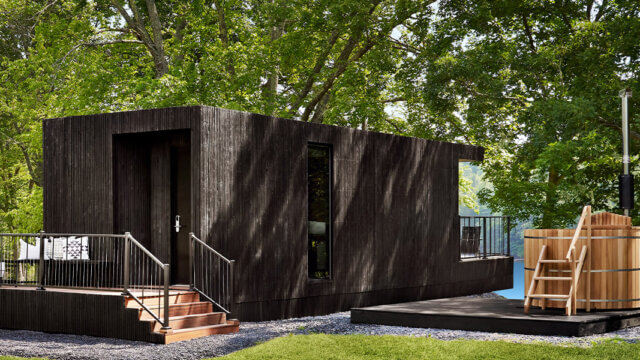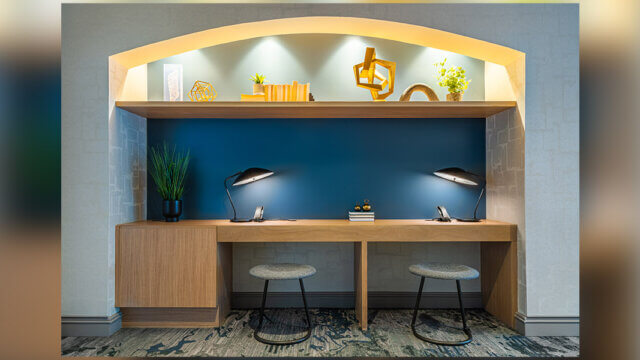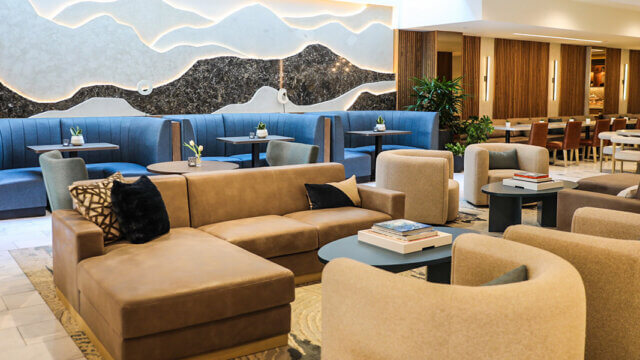So often, travelers visit hotels and are inspired by the decor they see when they are decorating their homes. Now, for many reasons, designers are bringing residential style into the hotels they design.
For Maria Gossett, cofounder, Pixel Design Collaborative, people have a comfort at home that they have become familiar with.
“That seems to be something that we’re looking for across the board in all of our spaces—not just having that comfort at home and then going out to these big, kind of old school glitzy spaces—those feel a little cold and a little uninviting now,” she said. “This sort of shift we’ve seen is people really gravitating towards things that feel like home. The touch points—the lighting being a little bit softer, all these different types of sensors that we’re able to control in our homes. I think that’s more what we’re looking for now.”
The pandemic also made people search out the comforts of home.
“Not that the desire for these types of spaces didn’t exist before COVID, I think they did,” said Kendal Rogers, cofounder, Pixel Design Collaborative. “I just don’t think people realized as much what specifically made them comfortable versus feeling a little cold and uninvited in spaces. Over COVID, we all got much more intimately familiar with our homes…Everybody decided ‘OK, if I’m going to be at home, 24/7 then home needs to be a little more comfortable.’ Everybody spent a lot of time, energy and resources making their home somewhere that they really love spending time.”
After the pandemic, people recognized what made them comfortable. “Everyone has reevaluated what makes it worth leaving home for—’I can do so many things from home,’” she said. “’So why do I need to leave? I would rather be home. I’m more comfortable at home.’”
With the Wylie Hotel in Atlanta, the team at Pixel added that homey touch by using mix-and-match decor, something common at many homes. “The furniture and decor in our homes are often a culmination of our lives—a dresser found at a vintage market, a lamp that’s been passed down from family members—resulting in a space that might not perfectly match,” said Gossett. “Hotels are adopting a similar ethos with mix-and-match decor to make a place feel more like home with different features in each room.”
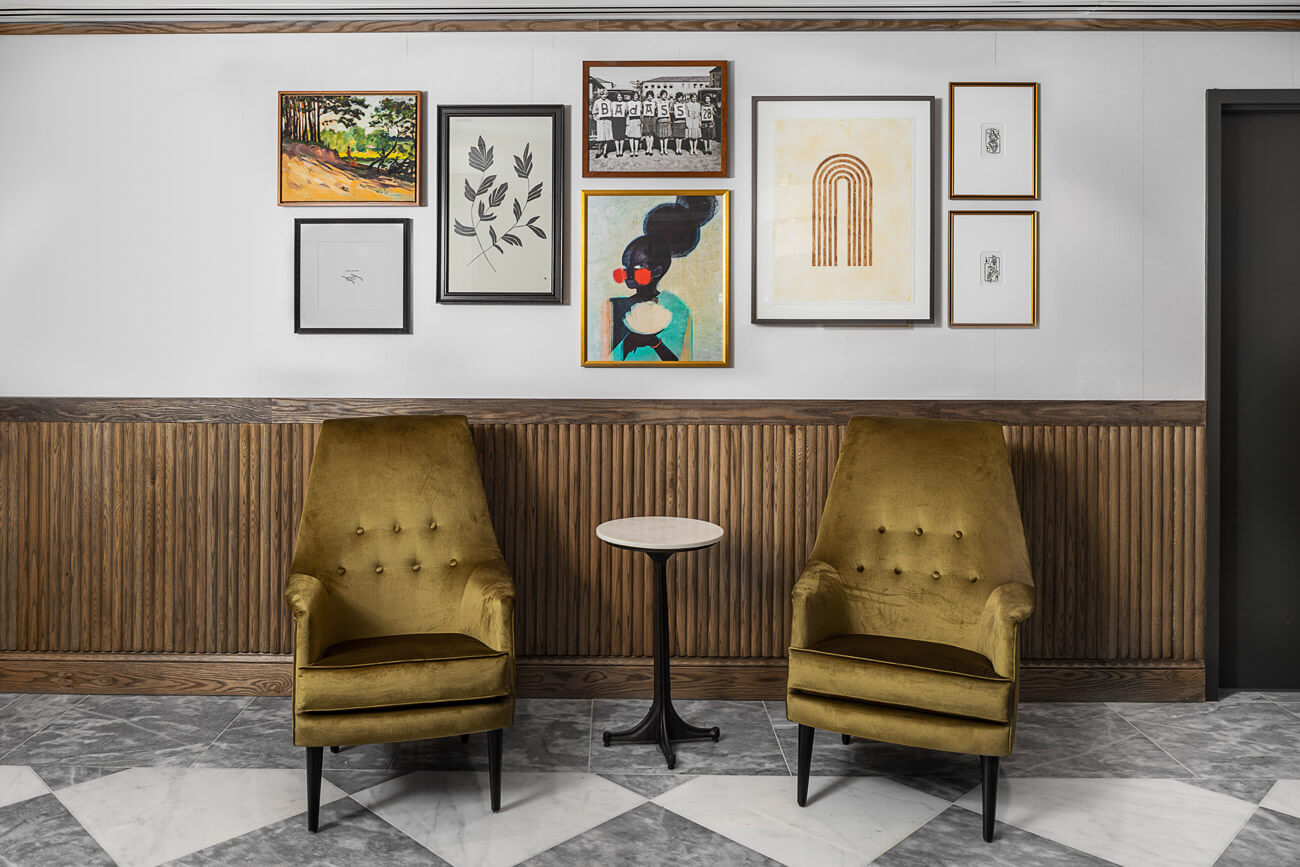
The pieces can fit in with the specific story of a hotel. “That’s the part that you get to play with as a designer that adds to the personality [of a property], and that makes it feel a little bit more residential,” she said. “It’s not just that we needed a chair and picked the most beautiful chair we could find—maybe we picked a really high-back throne-like chair because it is supposed to be something special when you first walk in… You have a chance to do something and add a little bit of personality. That little bit of boldness pushes the residential feel. It seems a little counterintuitive, but I think that’s how it ends up working quite often. And through that, you get the personality of the local area that you’re actually in.”
While mixing and matching gives the design that residential feel, the items chosen are still being used in a hotel and need to be able to handle the wear and tear that comes with that environment. “Part of it is knowing where we can go truly residential in the details and where we need to consider that an item needs to be contract appropriate,” said Rogers. “It needs to really stand the test of time.”
With many of the items custom-made for properties, she said that residential-specific details can be added that will stand up to more use. “You can add a super-pretty authentic wood leg versus just having the block leg that would have typically gone on that piece,” she said. “You can use a very residential-feeling fabric but still have a finished treatment that is durable and is cleanable foam since the sit of a sofa makes a huge difference in whether it feels residential or if it feels very contract.”
At the Restoration Asheville in Asheville, NC, from the beginning, the owners wanted a residential feel. For the design, Pixel Design included lifestyle features such as spacious bathrooms, comfortable living areas for getting ready or working, and plants to provide a home-like experience for guests.
“They wanted the concept to go from lobby to restaurant to room, and they really thought about how people would move through the space and so that you don’t really ever lose that sense as you’re in any space,” said Rogers.
Having a homey feel, especially with live plants in a room, means that there is a higher level of care required. “They’re comfortable with the idea of having plants because they know they’re going to maintain it and they take do a very good job of taking good care of it,” she said.
